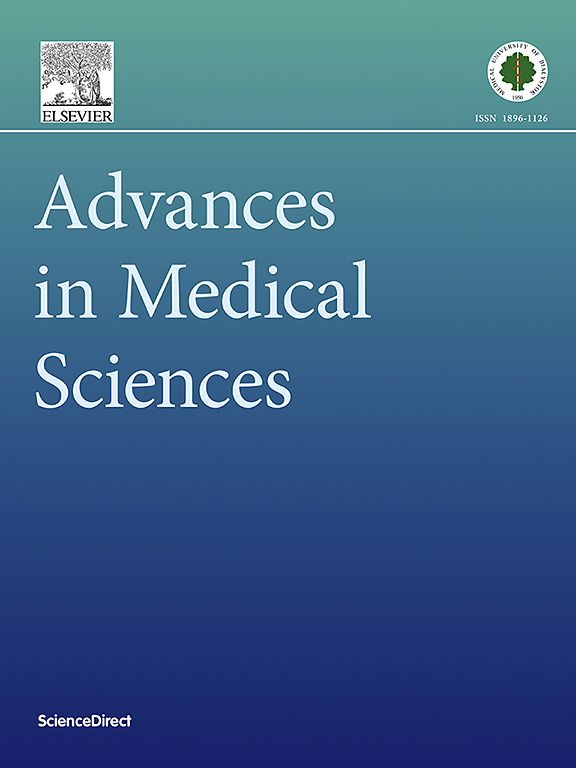Investigation of the effects of umbilical cord and adipose-derived mesenchymal stem cells on endoplasmic reticulum stress in cadmium-induced rat kidney
IF 2.6
4区 医学
Q3 MEDICINE, RESEARCH & EXPERIMENTAL
引用次数: 0
Abstract
Purpose
The hazardous heavy metal cadmium (Cd) has the potential to cause long-term kidney damage, mostly dependent on autophagy. Endoplasmic reticulum (ER) stress has been recognized as a primary source of Cd-induced toxicity. The ER chaperone GRP78 binds ER stress sensors, keeping them dormant. Exposure to Cd increases ER stress, a well-known inducer of autophagy. Adipose-derived mesenchymal stem cells (AD-MSC) are potentially useful tissue engineering and cellular treatment tools. Various disorders are treated with human umbilical cord MSCs (HUC-MSCs). They possess several unique qualities that are necessary for their therapeutic uses. The study aimed to investigate the effects of AD-MSCs and HUC-MSCs on Cd-induced nephrotoxicity.
Methods
The study used 36 male Wistar albino rats that were divided into six groups: control, AD-MSC, HUC-MSC, Cd, Cd + AD-MSC, and Cd + HUC-MSC. Hematoxylin and eosin (H&E) were used to stain the renal tissues in preparation for a histological analysis. Furthermore, the ER stress level was assessed by measuring GRP78 immunoexpression. Additionally, LC3B and Beclin-1 immunostaining were used to determine the autophagy.
Results
The histopathological results showed that the glomerular structure, proximal and distal tubules were disrupted in rat kidneys from the Cd group. Treatment with AD-MSCs and HUC-MSCs restored renal histological damage caused by Cd. Additionally, in Cd-induced renal tissues, there was an increase in the immunoexpression of the autophagic sensors LC3B and Beclin-1 and the ER stress indicator GRP78.
Conclusion
MSCs enabled Cd-damaged kidney tissues to regain an almost healthy histological structure.

脐带和脂肪源性间充质干细胞对镉诱导大鼠肾内质网应激影响的研究。
目的:有害重金属镉(Cd)对肾脏有潜在的长期损害,主要依赖于自噬。内质网(ER)应激已被认为是cd诱导毒性的主要来源。内质网伴侣GRP78结合内质网应激传感器,使其处于休眠状态。暴露于Cd会增加内质网应激,这是一种众所周知的自噬诱导因子。脂肪源性间充质干细胞(AD-MSC)是潜在的有用的组织工程和细胞治疗工具。人类脐带间充质干细胞(HUC-MSCs)可治疗多种疾病。它们具有治疗用途所必需的一些独特品质。本研究旨在探讨AD-MSCs和HUC-MSCs对cd所致肾毒性的影响。方法:选用雄性Wistar白化大鼠36只,分为对照组、AD-MSC组、HUC-MSC组、Cd组、Cd+AD-MSC组、Cd+HUC-MSC组。用苏木精和伊红(H&E)染色肾组织,为组织学分析做准备。此外,通过检测GRP78的免疫表达来评估内质网应激水平。LC3B和Beclin-1免疫染色检测细胞自噬情况。结果:组织病理学结果显示,Cd组大鼠肾脏肾小球结构、近端小管和远端小管被破坏。用AD-MSCs和HUC-MSCs治疗可以恢复Cd引起的肾组织损伤。此外,在Cd诱导的肾组织中,自噬传感器LC3B和Beclin-1以及内质网络应激指标GRP78的免疫表达增加。结论:MSCs使cd损伤的肾脏组织恢复了近乎健康的组织结构。
本文章由计算机程序翻译,如有差异,请以英文原文为准。
求助全文
约1分钟内获得全文
求助全文
来源期刊

Advances in medical sciences
医学-医学:研究与实验
CiteScore
5.00
自引率
0.00%
发文量
53
审稿时长
25 days
期刊介绍:
Advances in Medical Sciences is an international, peer-reviewed journal that welcomes original research articles and reviews on current advances in life sciences, preclinical and clinical medicine, and related disciplines.
The Journal’s primary aim is to make every effort to contribute to progress in medical sciences. The strive is to bridge laboratory and clinical settings with cutting edge research findings and new developments.
Advances in Medical Sciences publishes articles which bring novel insights into diagnostic and molecular imaging, offering essential prior knowledge for diagnosis and treatment indispensable in all areas of medical sciences. It also publishes articles on pathological sciences giving foundation knowledge on the overall study of human diseases. Through its publications Advances in Medical Sciences also stresses the importance of pharmaceutical sciences as a rapidly and ever expanding area of research on drug design, development, action and evaluation contributing significantly to a variety of scientific disciplines.
The journal welcomes submissions from the following disciplines:
General and internal medicine,
Cancer research,
Genetics,
Endocrinology,
Gastroenterology,
Cardiology and Cardiovascular Medicine,
Immunology and Allergy,
Pathology and Forensic Medicine,
Cell and molecular Biology,
Haematology,
Biochemistry,
Clinical and Experimental Pathology.
 求助内容:
求助内容: 应助结果提醒方式:
应助结果提醒方式:


